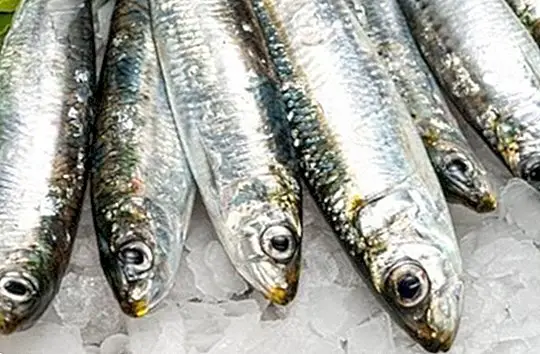Vitamin D: what it is, functions, benefits and rich foods
The vitamin D, unlike for example the vitamin B1, is a fat-soluble vitamin (one that is soluble in fatty substances) essential for maintaining the health of our bones. We find it in two forms: through solar rays (ergocalciferol) or from animal sources (colecalciferol). The first of these occurs when ultraviolet light affects a precursor substance called ergoresterol, which, for example, has some fungi and yeasts.
As you can guess to some extent, it is mainly the light on the skin, one of the main sources of vitamin D. Of course, over the years, and ultimately with age, our body's ability to synthesize it through exposure to the sun decreases considerably.
That is why we find vitamin D naturally in a few foods, although we can also find it today in those foods enriched with this vitamin, such as cereals.
Because of this issue it is difficult to take vitamin D excessively, but this does not mean it is one of the most dangerous if consumed in excess, since it can affect the heart, lungs and kidneys.
Main functions of vitamin D
Among other aspects, vitamin D intervenes in the absorption of calcium and of phosphorus, being responsible for the quantity of these minerals both in the teeth and in the bones. Helped by the parathyroid hormone, Maintains adequate levels of phosphorus and calcium in the blood circulation.
Did you know that the sun is the main source of vitamin D?
Many nutritionists, doctors and experts advise sunbathing as an excellent and wonderful way to provide vitamin D to our body. The reason is more than obvious: a moderate exposure to the sun is a fundamental way for our body to get the amount of vitamin D required per day.

For this to be the case, it is necessary that the ultraviolet B (UVB) fraction found in the sun's rays come into contact with the skin. When this happens, our body is able to synthesize vitamin D correctly.
To get it, Just expose the face and arms to the sun for 30 minutes a day. In this way, we will make sure that our body can synthesize vitamin D properly.
Of course, we must pay special attention to maintaining adequate skin protection whenever we go to sunbathe, to reduce the risk of skin cancer, and above all, avoid possible burns.
In this sense, an excellent form of prevention, to safely sunbathe and synthesize vitamin D better, is to always use sunscreen creams, avoid the hottest hours of the day, and reduce sun exposure to 30 minutes
Foods rich in vitamin D
Although, as we have indicated before, there are few foods that naturally contain vitamin D, this does not mean that there are no foods that provide it.
Among the most interesting are sardines and anchovies, tuna and fresh bonito, fatty cheeses, margarine, mushrooms, eggs, milk and milk. yogurt, among others.
In fact, nowadays it is possible to find us in the market with foods and beverages enriched with vitamin D and calcium, since we should not forget that vitamin D is essential for the proper absorption of calcium, which is why it is always advised to consume them together. For example, we can find vitamin D + calcium in fortified foods such as butter, margarine, milk and breakfast cereals.

Recommended daily amounts of vitamin D
The Institute of Medicine of the United States advises a daily consumption of 15 micrograms of vitamin D in people up to 70 years of age, and 20 micrograms, in people over this age.
On the other hand, FESNAD itself (Spanish Federation of Nutrition, Food and Dietetic Societies) advises a daily intake of vitamin D of between 5 to 15 micrograms per day, depending on age. This article is published for informational purposes only. You can not and should not replace the consultation with a Nutritionist. We advise you to consult your trusted Nutritionist. ThemesVitamins



